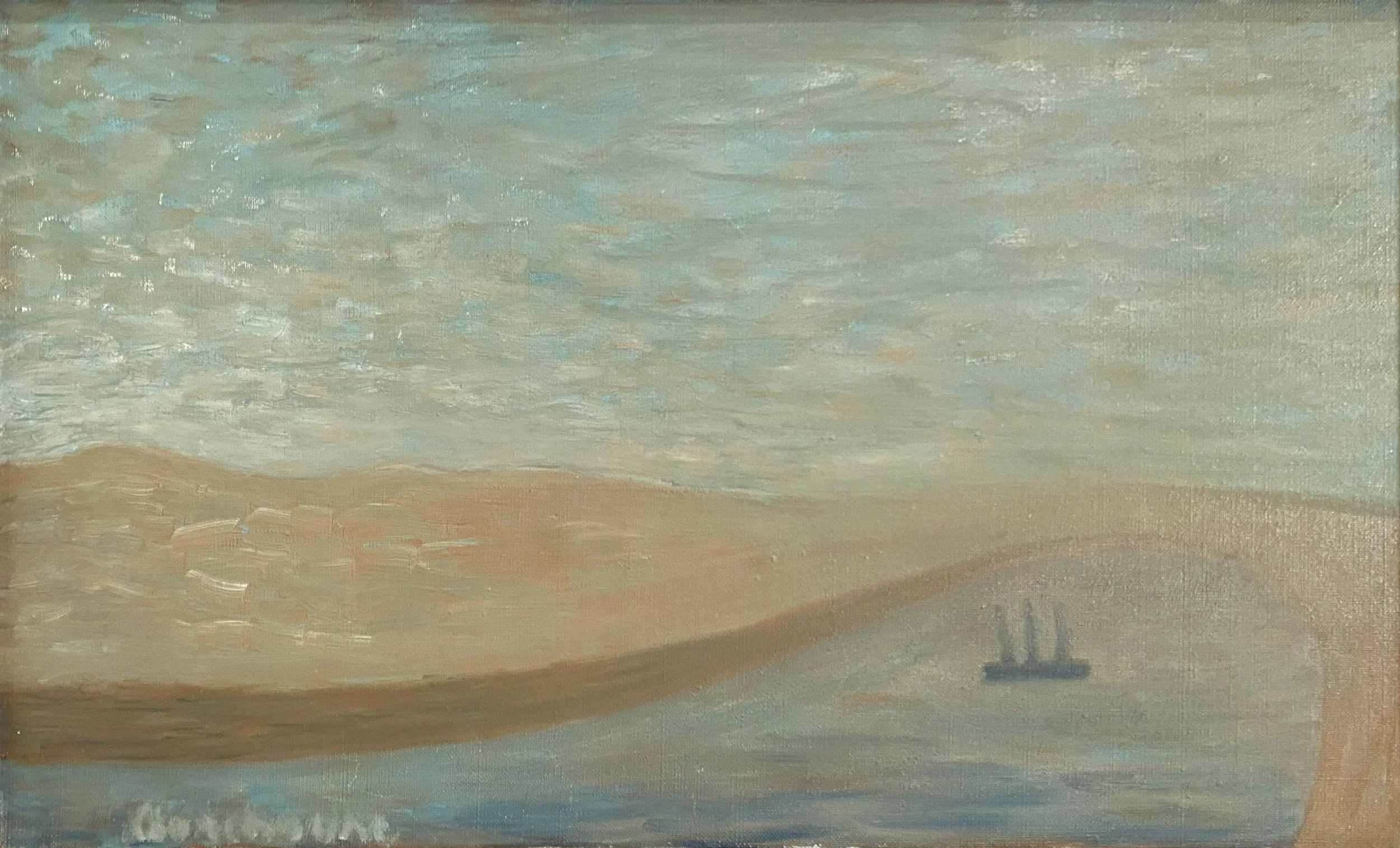Serge Charchoune (Russian-French, 1888-1975)
Biography
Serge Charchoune (also Sergey Sharshun, Russian: Сергей Ивнович Шаршун) was a Russian artist and poet. He moved to Paris in 1912 and was mainly active in France throughout his life. Closely associated with Cubism, Dada and Surrealism, Charchoune’s work is often described as an ‘alternative’ abstraction. His work is seen as modest and gentle in the atmosphere of aggression and violence seen in his contemporaries. While associated with many big ‘schools’ of art, Charchoune’s very best work lies in his creativity that does not fit uniformly into any one specific style.
On his first arrival in Paris, Charchoune became interested in the Cubist movement and studied under Henri Le Fauconnier. During World War I, he spent two and half years in Spain, primarily in Barcelona. It was there that he first came into contact with Dada and was inspired by Islamic ornamental tiles.
Following the 1917 revolution in Russia, Charchoune tried to return to his home country but failed so he remained in Paris. He began attending Dadaist meetings and participated in Dada demonstrations, however, breaking his ties with the movement in the early 1920s.
From the 1930s onwards, Charchoune experimented with both abstract and figurative languages, often combining the two. Colour and texture play an important role in the work of the postwar period, as the relationship between art and music comes to the forefront of his paintings. Charchoune drew a lot of inspiration from classical music, as evident in many canvases of his mature period titled after specific compositions.
Related artists
André Lanskoy / Pierre Dmitrienko / Youla Chapoval / Albert Bitran / Jeanne Coppel / Anna Staritsky / Max Papart / Francis Bott
Available works
Please see below the selection of available original artworks by Serge Charchoune.
Serge Charchoune, Composition blanche, 1955. Gouache on paper. 31,5 by 49 cm.
Serge Charchoune, Bach Contate Variation 3, 1968. Oil on canvas. 50 by 150 cm.
Serge Charchoune, Heyden: Nocturne (Homage à Wroubel), 1966. Oil on canvas. 50 by 150 cm.
Serge Charchoune, Galapagos, 1973. Oil on canvas, 33 by 55 cm.
Serge Charchoune, Galapagos Couchant II, 1973. Oil on canvas. 33 by 56 cm.






